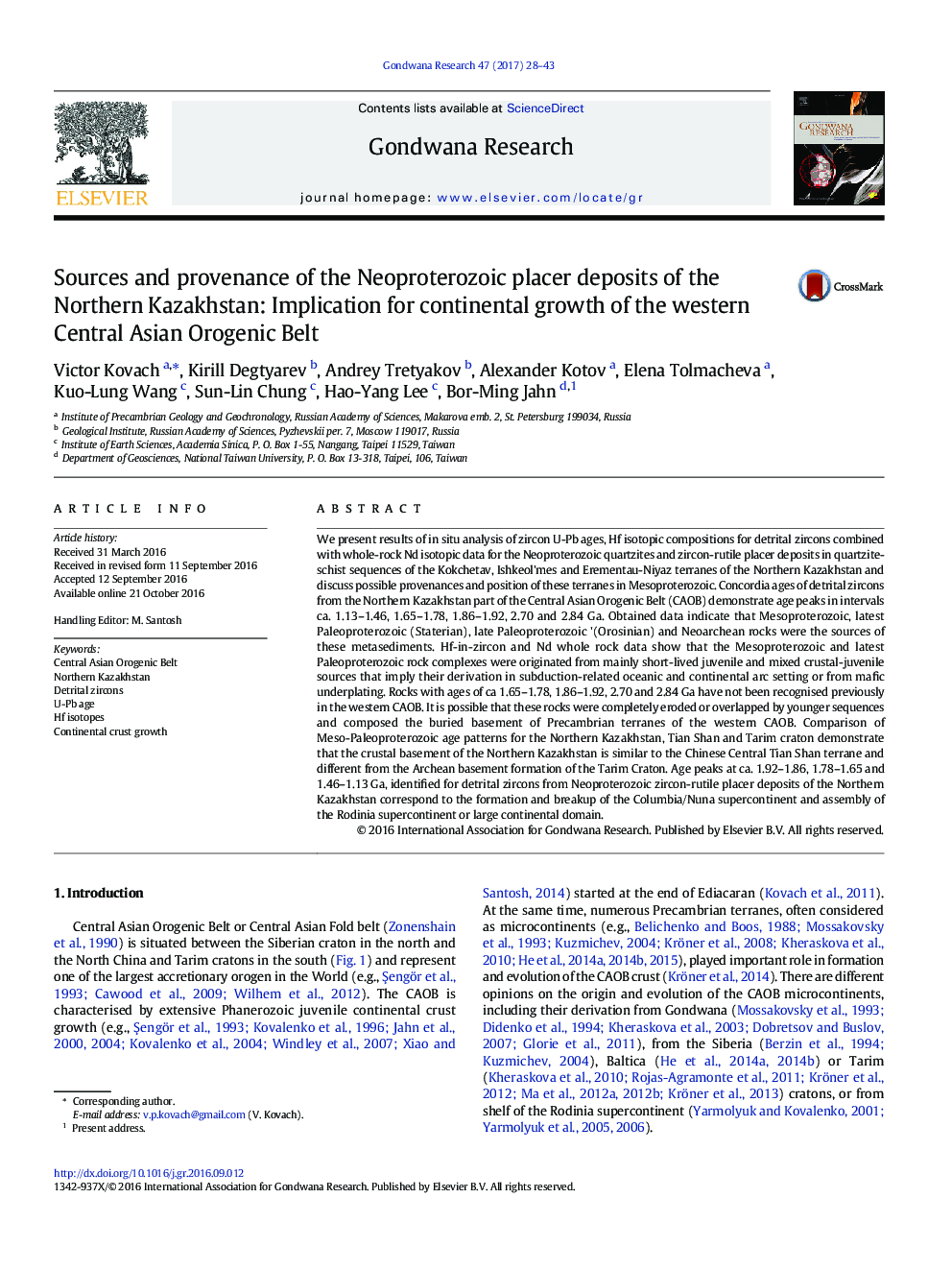| Article ID | Journal | Published Year | Pages | File Type |
|---|---|---|---|---|
| 5785427 | Gondwana Research | 2017 | 16 Pages |
â¢The Neoproterozoic quartzite-schist sequences of the Northern Kazakhstan were studiedâ¢Age peaks ca. 1.13-1.46, 1.65-1.78, 1.86-1.92, 2.70 and 2.84 Ga obtained for detrital zirconsâ¢Mesoproterozoic and Paleoproterozoic rock complexes formed in subduction-related settingsâ¢The basement of the Northern Kazakhstan is similar to the Chinese Central Tian Shan terraneâ¢Age peaks correspond to the formation and breakup of the Columbia and the Rodinia supercontinent
We present results of in situ analysis of zircon U-Pb ages, Hf isotopic compositions for detrital zircons combined with whole-rock Nd isotopic data for the Neoproterozoic quartzites and zircon-rutile placer deposits in quartzite-schist sequences of the Kokchetav, Ishkeol'mes and Erementau-Niyaz terranes of the Northern Kazakhstan and discuss possible provenances and position of these terranes in Mesoproterozoic. Concordia ages of detrital zircons from the Northern Kazakhstan part of the Central Asian Orogenic Belt (CAOB) demonstrate age peaks in intervals ca. 1.13-1.46, 1.65-1.78, 1.86-1.92, 2.70 and 2.84 Ga. Obtained data indicate that Mesoproterozoic, latest Paleoproterozoic (Staterian), late Paleoproterozoic '(Orosinian) and Neoarchean rocks were the sources of these metasediments. Hf-in-zircon and Nd whole rock data show that the Mesoproterozoic and latest Paleoproterozoic rock complexes were originated from mainly short-lived juvenile and mixed crustal-juvenile sources that imply their derivation in subduction-related oceanic and continental arc setting or from mafic underplating. Rocks with ages of ca 1.65-1.78, 1.86-1.92, 2.70 and 2.84Â Ga have not been recognised previously in the western CAOB. It is possible that these rocks were completely eroded or overlapped by younger sequences and composed the buried basement of Precambrian terranes of the western CAOB. Comparison of Meso-Paleoproterozoic age patterns for the Northern Kazakhstan, Tian Shan and Tarim craton demonstrate that the crustal basement of the Northern Kazakhstan is similar to the Chinese Central Tian Shan terrane and different from the Archean basement formation of the Tarim Craton. Age peaks at ca. 1.92-1.86, 1.78-1.65 and 1.46-1.13Â Ga, identified for detrital zircons from Neoproterozoic zircon-rutile placer deposits of the Northern Kazakhstan correspond to the formation and breakup of the Columbia/Nuna supercontinent and assembly of the Rodinia supercontinent or large continental domain.
Graphical abstractDownload high-res image (384KB)Download full-size image
